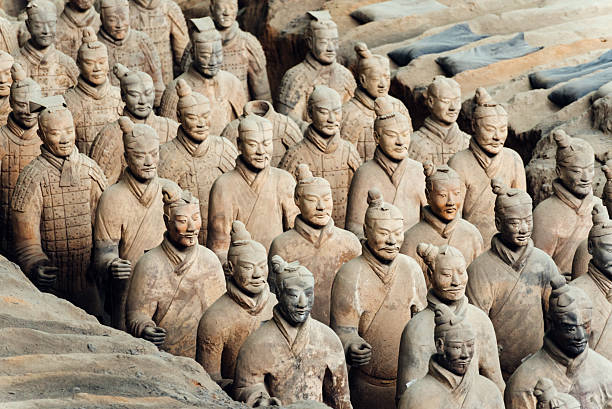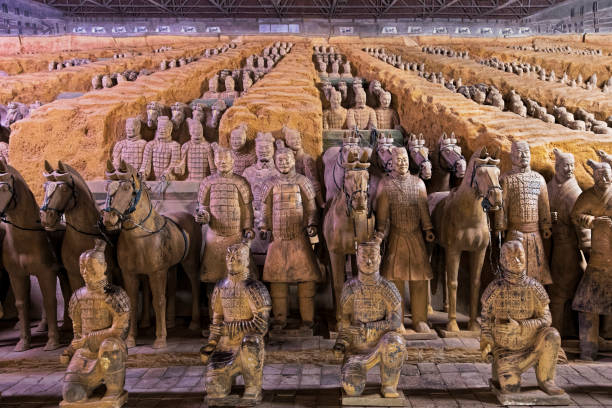Terracotta Warriors, China
The first emperor of China, Qin Shi Huang, is represented by a number of terracotta statues collectively known as the "Terracotta Army". It is a type of funeral art that was interred with the emperor around 210–209 BCE with the intention of safeguarding him in the afterlife. The statues were found in 1974 by local farmers in Lintong County, west of Xi'an, Shaanxi, China. They date to around the late third century BCE.
The generals are the tallest of the figures, whose heights vary depending on their functions. The figurines feature horses, chariots, and soldiers. More than 8,000 soldiers, 130 chariots pulling 520 horses, and 150 cavalry horses, according to estimates from 2007, were buried in the three pits that housed the Terracotta Army, most of which were located close to Qin Shi Huang's tomb. Different terracotta non-military characters, including bureaucrats, acrobats, strongmen, and musicians, were discovered in other pits.












